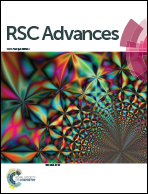CO2 adducts of Lewis acid–base pairs (LBCO2LA; LB = PMe3, NHC and LA = AlH3, AlCl3, BH3) − analogous to carboxylic acids and their derivatives†
Abstract
The relationship between the structure and bonding of two different classes of molecules helps to understand and correlate their physiochemical activity. Here, we report the structure-bonding analogy between CO2 adducts of a Lewis acid (LA)–Lewis base (LB) pairs, LBCO2LA (LB = PMe3 and NHC; LA = AlH3, AlCl3 and BH3) and carboxylic acids and their derivatives, RCO2R′ (R, R′ = alkyl, H) by quantum mechanical calculations. The direction of charge flow in LBCO2LA is from LB to LA, whereas the reverse direction of charge flow (R′ to R) is observed for RCO2R′ leading to a formally negatively charged CO2 group (2A1) in both systems. This negatively charged bent CO2 group plays a deterministic role towards its bonding interaction with other fragments. The bonding analysis by the EDA-NOCV method indicates that both the LB and R groups form an electron sharing bond with the carbon atom of the bent CO2 fragment, whereas both LA and R′ form a donor–acceptor interaction with the oxygen atom. Our analysis suggests that the CO2 adducts of the Lewis acid (LA)–Lewis base (LB) pairs, LBCO2LA, can be considered as inorganic analogues of carboxylic acids and their derivatives, RCO2R′.


 Please wait while we load your content...
Please wait while we load your content...